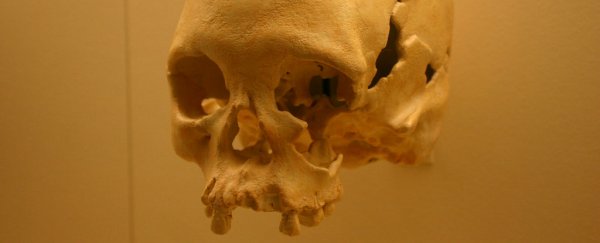One of the most precious archaeology finds in human history has survived the devastating fire that tore through the National Museum of Brazil in early September.
The skull of Luzia is believed to be one of the oldest human remains ever recovered in the Americas.
It is also one of the museum's most prized possessions; that's considerable, since the 200-year-old institution used to boast a 20-million-item collection.
But fame, however great, is no match for the destruction of flames. After the museum's main building burnt to the ground, the priceless skull and accompanying femur were unaccounted for, and many assumed the worst.
A day after the tragedy, artist Maurilio Oliveira told The New York Times that the only thing that could have saved the fragile skull was "if a piece of wood or something fell and protected it."
But now museum officials have reported that most of the skull has actually survived.
Researchers recovered 80 percent of it last week from within the metal case and metal cabinet where it was stored for safety reasons - a strategic move that has paid off handsomely.
"It was like a member of the family coming back to us," archaeologist Claudia Carvalho, who is overseeing recovery efforts at the museum, told Science magazine.
The skull was found in pieces as the glue which held it together had melted in the fire.
While some of the fragments have suffered breaks and scarring, Carvalho says the skull is not beyond repair and the damage is "less than expected."
Museum officials are still holding out hope that they can find more of the skull amongst the wreckage.
Buried under 12 metres (40 feet) of mineral deposits and debris, Luzia's ancient remains were discovered in a rock shelter in 1975, near the city of Belo Horizonte, Brazil.
The skull and femur belonged to a young woman, who is thought to have wandered the savannah of south-central Brazil in a hunter-gatherer society some 11,500 years ago.

Nicknamed Luzia, this woman is believed to have died in her 20s, and her remains suggest she perished from an accident or an animal attack.
In the decades since her discovery, Luzia's remains have provided much insight into the history of early human migration.
Archaeologists think that Luzia was part of the first wave of nomadic people that migrated to South America.
The recovery of her skull is a victory for the field of archaeology, although her femur is still missing.
Once the building is deemed structurally sound, a full damage assessment and recovery operation will begin. But this likely won't be until the start of next year.
Nevertheless, the unlikely recovery of Luzia's skull has left museum officials feeling optimistic about further recovery efforts.
"We are not giving up on our collections," Carvalho says. "We want them to be reborn, even if it takes decades."
